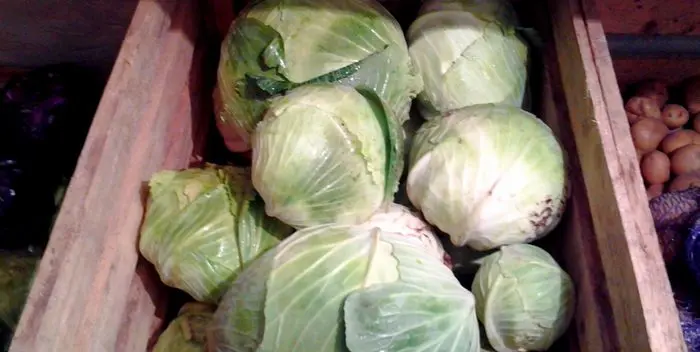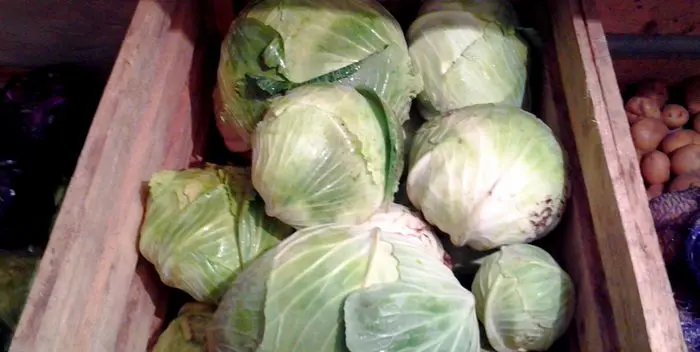
How and where to store cabbage correctly?

The shelf life of cabbage is influenced not only by its variety, but also by many other nuances. Growing conditions are one of the main criteria in this case. Some features cannot be recognized if the cabbage is bought in a store. This applies, for example, to the types of soil, the amount of precipitation, as well as the types of fertilizers used. If you plan to store cabbage bought in a store, then preference should be given to the densest heads of cabbage without yellowed leaves or signs of rotting.
The nuances of storing cabbage:
- the shortest shelf life is characteristic of early varieties of cabbage (it is better to eat it as soon as possible);
- mid-season and late varieties of cabbage are stored for the longest;
- the top leaves from the cabbage should not be removed before storing it;
- frozen, cracked, wilted cabbage or cabbage with mechanical damage (as well as cabbage with traces of disease or insect damage) cannot be stored;
- if the cabbage is stored in a wooden box, then it is necessary to exclude the contact of the heads of cabbage with each other with the help of a newspaper or any paper;
- place the cabbage during storage with the stump top;
- cabbage is well preserved on a kind of “sand pillow” (this option is suitable for storage in cellars, basements or on the balcony);
- you can store cabbage in ordinary soil (buckets, barrels or even bags can be used as storage containers);
- if cling film is used when storing cabbage, then wrap the head of cabbage in it as tightly as possible so that there is no accumulation of air or condensation;
- in the refrigerator, cabbage can be stored in paper (this method will extend the shelf life of the head);
- you can prevent the appearance of rot or mold on cabbage with the help of crushed chalk (heads of cabbage should be “powdered” with chalk and placed in a cool place);
- hanging cabbage can be stored longer;
- close contact of heads of cabbage with each other can become the main accelerator of the decay process;
- if burdock leaves are placed next to the cabbage, then the shelf life of the heads of cabbage will increase slightly;
- it is desirable that the air flows to the heads of cabbage from either side (if such conditions are difficult to create, then it is better to turn the cabbage periodically during storage).
Often, during the storage of cabbage, a white bloom appears on the heads of cabbage. This sign indicates the beginning of the development of mold. You can stop this process with crushed chalk or mustard powder. The affected areas are simply treated with the indicated components, and before eating, they are removed along with the leaves or cut off.
How much and at what temperature to store cabbage
Mid-season cabbage varieties, subject to the necessary conditions, can be stored for 2-3 months. Late varieties persist for 7-9 months. The optimum storage temperature is between -1 and +1 degrees. At the same time, the air humidity should be at least 85% and not more than 90%. Otherwise, the cabbage will either wither and lose its juiciness, or begin to deteriorate and rot.
The nuances of the temperature regime for cabbage:
- the average storage temperature for cabbage is in the range from -1 to +5 degrees;
- if the cabbage is young, and its leaves are too tender, then subzero temperatures should be avoided to avoid overfreezing of the heads of cabbage;
- white cabbage is less susceptible to temperature and more endurance.
The average shelf life of cabbage is 4-6 months. When placing heads of cabbage in a cellar or basement, this indicator may increase, and under conditions of refrigerators, it may decrease. It is highly recommended to wrap the heads of cabbage with cling film or paper before placing them, especially in the cut state.









